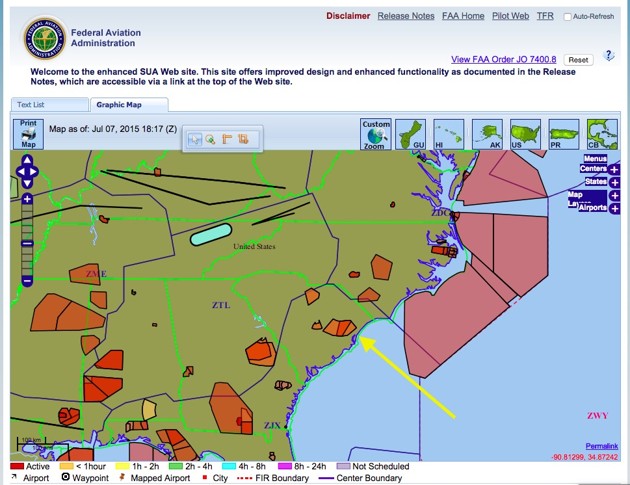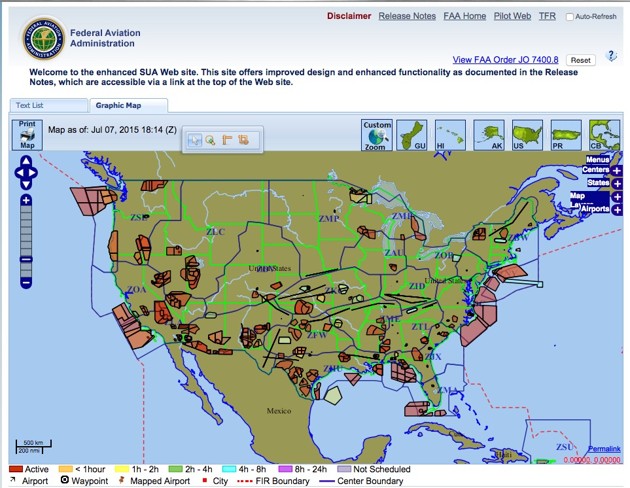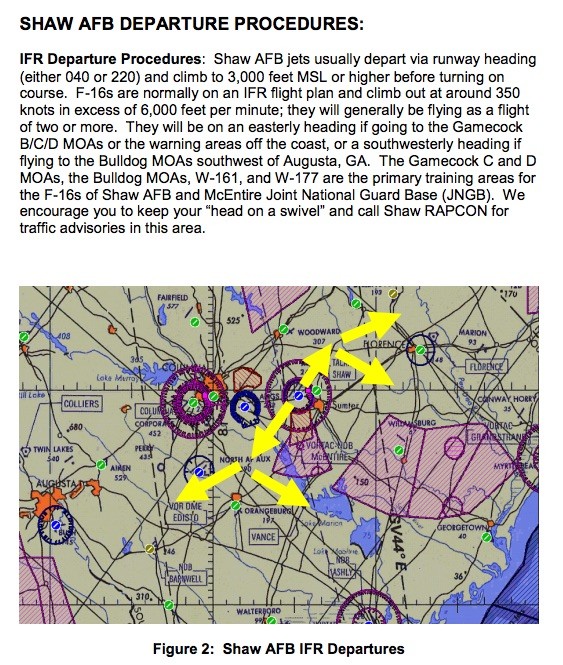Why Would an F-16 and a Cessna Be in the Same Part of the Sky?
A collision in South Carolina is a reminder that there’s only so much airspace to go around.
Mid-air collisions are among the rarest and most horrific aviation perils. The most famous collision involving airliners in the United States, the crash of planes from United Airlines and TWA over the Grand Canyon nearly 60 years ago that killed everyone on board, led to dramatic changes in U.S. air-traffic control procedures. (There were two other U.S. airline collisions in the 1960s). In 2002, a Russian passenger airliner and a DHL cargo jet collided over Überlingen, Germany. Investigators eventually traced the cause to shortcomings in the Swiss air-traffic control system. Two years later, a Russian architect whose wife and children had died in the crash stabbed to death the Swiss controller who had been on duty at the time, even though an investigation had found the controller not personally at fault.
In the statistically much riskier world of non-airline, “general aviation” flight, collisions are also statistically rare. The most authoritative source in this realm is the annual Joseph T. Nall Report from the Aircraft Owners and Pilots Association. (AOPA is known as the NRA of the skies for its effective lobbying on behalf of general aviation; as a member, I’m entitled to say so.) According to the latest report, in 2013 general-aviation airplanes were involved in 948 accidents of all sorts, 165 of which were fatal. (The accident rate has steadily gone down.) Typically 1 to 2 percent of the total, 10 to 20 per year, involve collisions. So in practice mid-air crashes are not a major source of risk; but when you’re flying, you spend half the time scanning the surrounding air to see who might be headed your way. (Also, if you’re on an Instrument Flight Rules, IFR, flight plan, the controllers are supposed to be keeping planes separated. Pilots on Visual Flight Rules flights have official responsibility to “see and avoid” other traffic. But with a “flight following” service, controllers can help by calling out traffic in the vicinity. Many modern planes have traffic-detection systems, like the one in my Cirrus. By 2020 most planes will be required to have an advanced traffic-avoidance system called ADS-B, which you can read more about here.)
* * *
Why would a very fast Air Force F-16 fighter jet and a light, slow little Cessna 150 even have been in the same part of the sky? The main reason is that substantial parts of American airspace, especially away from the crowded northeast, are set aside as Military Operating Areas, or MOAs. Planes flying on IFR flight plans—where, again, the pilot goes where the controller says to go—are routed around the MOAs when they’re active, or through them if the controller has cleared a safe route with the military authorities. Planes flying under Visual Flight Rules are allowed to enter the MOAs even when they’re active—unlike Restricted Zones (for instance, over a nuclear-submarine base) or Temporary Flight Restrictions (like the gigantic one that surrounds all of Washington DC, or goes with the president wherever he travels). But passage through or near an MOA is at the pilot’s own risk.
In practice, I always check this real-time display from the FAA, which shows the “hot” or “cold” status of MOAs and other “special-use airspace.” Here is the way it looks right now. The areas in red are “hot” MOAs. I’ve added a yellow arrow pointing to the Gamecock MOAs that are north of Charleston.

I don’t know yet whether the collision actually happened within the MOA or outside it. It sometimes happens that the high-speed military traffic makes its swooping turns and dives beyond the exact vertical and horizontal limits of the MOA—and in any case, the fighter planes have to travel to the MOA from their bases. In this instance, the F-16 is reported to have been from Shaw Air Force Base, further inland near Columbia, South Carolina.
In case you’re wondering, here is the MOA situation for the U.S. as a whole right now, which explains why careful flight planning is called for in Nevada, Utah, and inland California:

The risk of collisions between fighter jets, which are moving very fast and aredesigned to be difficult to see, and slow, unaware civilian aircraft is well recognized in the flying world. Last year the military units based at Shaw published “Crowded Skies,” a manual for civilian pilots flying in the area, designed to give them a clearer idea of what to expect from the jet traffic. For instance, it said this about how jets would typically get from Shaw to the MOAs where they would do their maneuvers—the Gamecock MOAs are the ones in magenta at center-right of the map below. “We encourage you to keep your ‘head on a swivel’” because of traffic risks, the manual says:

And the opening page is prescient or poignant, in light of today’s crash:

As with most aviation disasters, exactly what went wrong in this case, and why, may take a while to become known. But if you’re wondering why an F-16 and a tiny Cessna 150 would be in the same area in the first place, the answer is: There’s only so much sky to go around.





